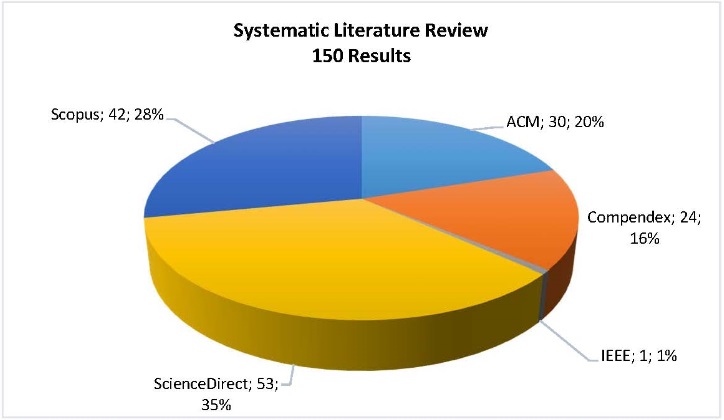Systematic Literature Review
This page summarize the two Systematic Literature Review conducted to auxiliate the process to extend SMarty to support UML sequence models, and identify experimental studies and their methodology to be applied in the set of experimental studies conducted.
Systematic Literature Review of Variability in Sequence Models
According to the proposed extension to sequence models for SMarty, beyond the concepts used and obtained from UML notation, a systematic literature review was conducted to identify the main proposals for the variability management approaches that support the interaction model of UML.
The objectives of the systematic literature review is identifying approaches that support managing variability in UML interaction diagrams (sequence and collaboration).
The recovery process of primary studies occurred through use of string in the more common search engines like Institute of Electrical and Electronics Engineers (IEEE) and Association for Computing Machinery (ACM), by the selection of the studies referring by experts and research in major conferences and workshops of the area. After recovery of the studies, preliminary screening was performed by reading the abstracts to identify studies according to the selection criteria.
A total of 1059 primary studies were obtained, which 15.86% are duplicates, leaving 891 who had their titles and abstracts read. After this procedure, 33 studies were selected for a full reading, represented only 3.70% of the total obtained.
The graph of Figure 1 presented the number of studies returned in the search engines and indication of experts.

With the complete reading of the 33 studies selected in the previous step, it was evaluated the effective relevance of each with respect to the exclusion criteria defined in the systematic review. Thus, from the total of 33 studies, 22 were rejected for not meeting the inclusion criteria and 11 (1.34%) were selected.
Among the 11 studies returned and selected to be read, only two were more relevant and they are described below:
Towards a UML Profile for Software Product Lines: The paper presents a UML profile with suport for class and sequence diagramsm to represent SPL, with support of OCL constraints. The paper shows the stereotypes used and how to apply them to the UML model. Its used common elements from the specification of the UML to represent variants of variabilities.
Software Product Line Engineering with the UML: Deriving Products: The paper presented the use of diagrams (UML class and sequence) to represent SPLs. It was presented a case study with Mercure Product Line, initially designed with a feature model (developed based on the SWOT approach), and after present in a class diagram with the definition of stereotypes to variabilities, variation points and variants. The approach defined two types of views: specific and generic, and two types of OCL constraints are created. It was proposed to use the standard Abstract Factory design with a decision model associated with the class diagram of SPL and also an algorithm, based on transformation models to derive products from classes diagram. For sequence diagrams, the element CombinedFragment from UML sequence models was used to represent variants and variabilities.
Experimental Evaluation of Variability Management Approaches: Systematic Literature Review
To investigate possible experimental contributions that could assist in the design and execution of the experimental studies, or even to identify possible studies that seek to compare the effectiveness of management approaches variability based on UML, a systematic literature review was conducted in major search engines .
The systematic literature review returned 178 studies, and aimed to identify studies with experimental validations for variability management approaches based on UML. Of these 178 results, 28 were identified as repeat, corresponding to 15.76%, which resulted in 150 studies. The presentation of results by search engines is presented in Figure 2.

There were no results about studies of validation of variability management approaches, but studies using similar techniques have been identified, and thus corroborate the definition of the set of experimental studies presented. Altogether were identified and read 7 studies, from these 7, 2 were relevant, and are summarized below:
Empirical Validation of Complexity and Extensibility Metrics for Software Product Line Architectures: Oliveira et al. (2010) presents the experimental validation of complexity metrics and Extensibility for product line (PLA) architectures, using techniques such as tests of normality (Shapiro-Wilk and Kolmogorov-Smirnov test) and Spearman correlation. For the development of the experiments, the proposed Wohlin et al.(2000) and Perry et al.(2000) were followed.
Assessing the influence of stereotypes on the comprehension of UML sequence diagrams: A family of experiments: The study presented by Genero et al. (2008), corresponds to the identification of effectiveness and effectiveness in the use of stereotypes in UML sequence diagrams. Running an experiment and two replications, where students identified their level of understanding in models of sequence with and without stereotypes, resulting in evidence that the stereotypes in these models help understand. The study presents the contributions of other empirical studies, but all focused on the identification of responsiveness with the use of stereotypes, however, the model proposed for the planning and conduct experimental assists the experimental procedure presented here.